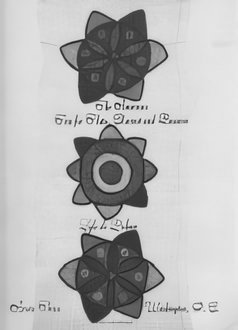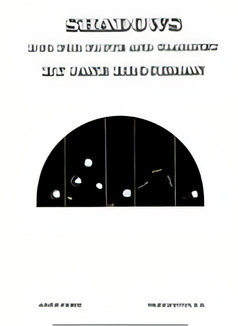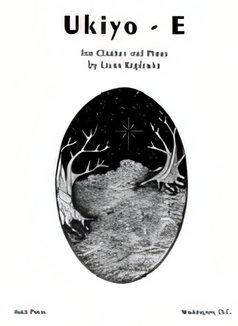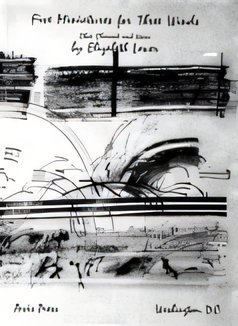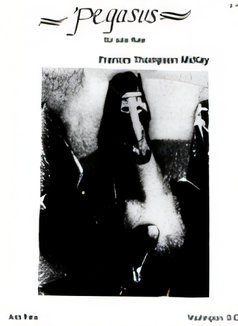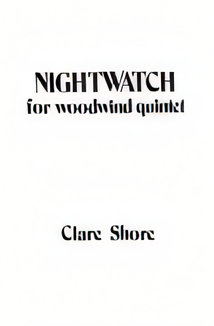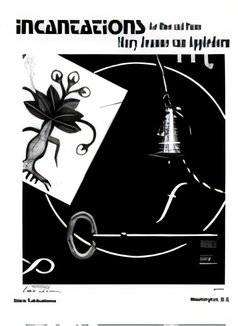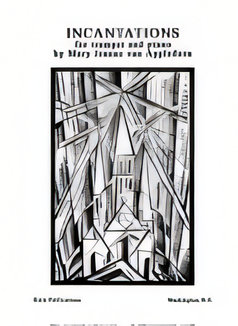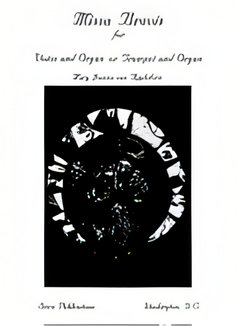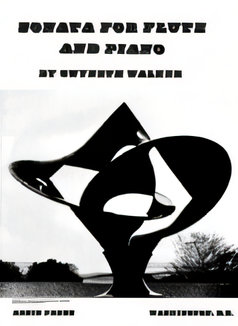Winds
Bohun, Lyle de
The Americas Trio
The piece is dedicated to Maria Suzette Elias Carreiro Dos Santos. It is in three short movements.
The music circulates at the New York Public Library.
Bremer, Carolyn
Sonata for Clarinet and Piano
“I found…warmth and creative fantasy in the American Carolyn Bremer’s well-structured sonata.” (Politiken, Copenhagen)
“Bremer’s sonata sounded virtuosic and conservative, sort of an unpredictable extension of Brahms.” (Infomation, Copenhagen)
The Sonata is in three movements and is permeated with subtle rhythmic shifts. The opening movement represents a microcosm of the whole in which two outer slow sections frame a quick driving section. A pair of clarinet cadenzas are featured in the slow second movement. Marked “aggressively”, the concluding movement emerges from the second cadenza of the preceding movement. The piece was premiered at the 1989 Louisiana Festival in Copenhagen, Denmark.
Brockman, Jane
Shadows: Duo for Flute and Clarinet
The tradition of imitation which has historically inspired two-voice music can be likened to an object and its shadow, continually evident in this composition. At times, the instrumental identities become obscured, and one is not certain which instrument is playing which line.
Also, the musical language of Richard Wagner still has much relevance for this composer. It is his shadow which is ‘felt’ throughout the work as the leitmotiv of Kundry (from Parsifal) is employed melodically, but without its characteristic rhythm–and in a new context. (Notes by the composer.)
The music is available through the composer’s website.
Koplewitz, Laura
Ukiyo-E for Clarinet and Piano
Ukiyo-E (meaning “floating world”) is an homage both to the genre of Japanese prints depicting waves and other scenes from nature and to the Impressionist composer, Claude Debussy, who was drawn to the Japanese prints.
Lauer, Elizabeth
Five Miniatures for Three Winds
There are five brief movements: Prelude, Dance, Interlude, Games, and Epilogue. According to the composer, the piece is about three wind instruments, each of strong personality, speaking both individually and collectively.
McKay, Francis Thompson
Pegasus for Flute
“multi-faceted…rhapsodic…a highly descriptive work.”
(The Washington Post)
There are three short movements: Morning/Invocation, Midday/Flight, and Night/Constellation.
Each movement portrays one of the roles of Pegasus: as the steed of the Muses who transports poets during inspiration, as the winged mount of Bellerophon, and as a constellation in the northern sky. The Washington Post further describes Pegasus: “Mostly [the piece] exercises the flute’s gift for simple song, but sometimes it calls for special effects, including the production of more than one note at a time or the sound of the wind in vast, open spaces.”
Pierce, Alexandra
Set of Three for Oboe and Piano
The movements are: Scherzando, Cantilena, and A Short Spin. The first movement is a miniature rondo with the two instruments in a give and take conversation. The second movement is a through-composed song for the oboe against a pulsating accompaniment of open-spaced chords in the piano.
Beginning with a habanera-like figure in the piano, the piece continues with a rhapsodic melody in the oboe which is not coordinated with the piano, but which proceeds independently, as if improvised. The piece is dedicated to oboist Francisco Castillo and was premiered by him with the composer at the piano in 1995.
The score is available from Groth Music.
Shaffer, Jeanne
Three Faces of Woman for Clarinet and Piano
Premiered at the 1996 convention of the Southeastern Composers League at Southwestern Louisiana State University, the work is the composer’s Op. 193, nos. 1-3.
Premiered at the 1996 convention of the Southeastern Composers League at Southwestern Louisiana State University, the work is the composer’s Op. 193, nos. 1-3. Movements are titled: Femme Fatale (blues), Femme Fragile (berceuse), and Feministe Furieuse (scherzo). She writes: “Since stronger versions of the themes of the first two movements are present in the third, the piece makes the statement that a feministe furieuse stage is necessary to break the stereotypes of the first two [femme fatale and femme fragile stages]. Also, the composer acknowledges that all three are present in herself and probably most women.” Richard Stoltzman and the Warsaw Philharmonic have recorded the orchestral version for MMC compact discs.
The music of two movements can be heard on YouTube.
Shore, Clare
Nightwatch for Woodwind Quintet
“…most provocative…highly impressionistic…positively orchestral.” (Washington Post)
Commissioned by the Dakota Wind Quintet and dedicated to R.B., the piece was written in 1983. The movement titles are: Aries, Taurus, Gemini, Cancer, Leo, Virgo, Libra, Scorpio, Sagittarius, Capricorn, Aquarius, and Pisces. The Washington Post elaborates: “By far the most provocative was Nightwatch, Clare Shore’s highly impressionistic evocation of the 12 signs of the zodiac. From its fanfare-like beginning to its quivering, haunting close, the piece covers an immense amount of dramatic territory. Each section reveals a clear structure and mood; at times Shore’s layering and highlighting of flute, clarinet, oboe, bassoon and horn is positively orchestral.”
The score is available through the composer’s website.
Van Appledorn, Mary Jeanne
Incantations for Oboe and Piano
Incantations for Oboe and Piano was written in 1998 and dedicated to Amy Brisco Anderson who also edited the piece. There are four movements. In Memoriam, the first, is a short, free movement with many pitch bends and quarter tones for the oboe (with the fingerings precisely indicated) and long sustained chords in the piano. Bacchanal is a fast movement that gets faster as it builds momentum to a fortissimo finish. Ambience continues without a break, alternating outbursts in the piano with those in the oboe. Ritual has a moto perpetuo piano part with a more lyrical oboe part, and an extremely loud final flourish.
The score circulates at the New York Public Library.
Incantations for Trumpet and Piano
“Van Appledorn’s Incantations has a bluesy tone straight from Miles Davis.” (American Record Guide)
Incantations (1991) was commissioned for the tenth anniversary of the opening of the Music Education Building at North Dakota State University. Written for the celebration of the house, the piece also reflects upon the third Sunday after Easter for which the Introit of the day begins “Jubilate.” It is in two short movements which are described in a review in Fanfare Magazine of the Opus 1 recordIing as “a yearning, chanting molto espressivo, followed by a rapid, celebratory piece which conjures up The Shrovetide Fair in Petrouchka.”
The score circulates at the New York Public Library.
Missa Brevis
The piece had its premiere in October Hall at the Saratov State Conservatorie in Saratov, U.S.S.R., in 1987. The performance was by Anatoly Selianin with organist Trina Khudiakova. Robert Birch, trumpet, and Carol Feather Martin gave the American premiere at Foundry United Methodist Church in Washington, D.C. and have recorded the piece on a Contemporary Record Society album entitled Brass and Pipes.
The piece circulates at the New York Public Library.
Walker, Gwyneth
Sonata for Flute and Piano
Written in 1978, the Sonata is in three movements marked: lively, dolce, and with spirit.
The piece circulates at the New York Public Library.

